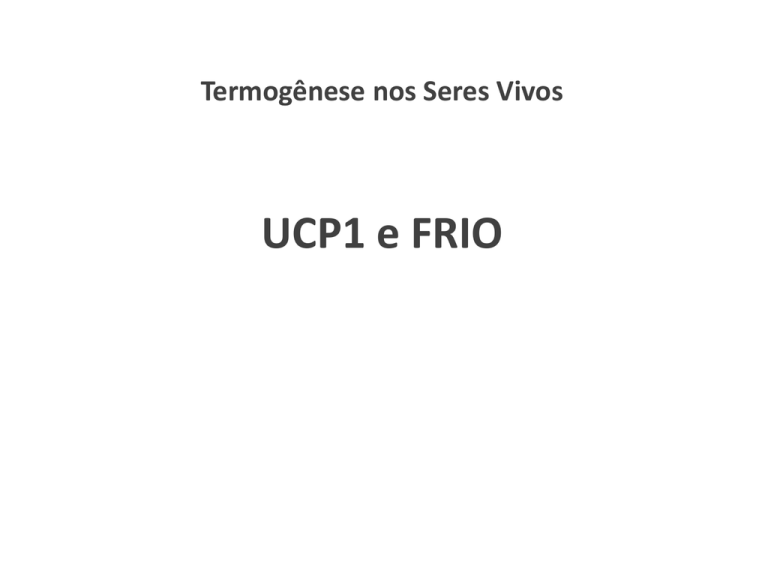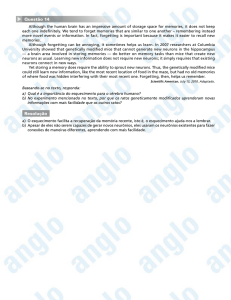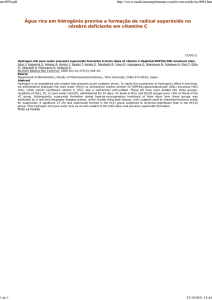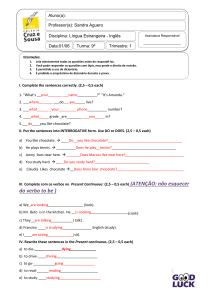
Termogênese nos Seres Vivos
UCP1 e FRIO
Mamíferos
Tecido Adiposo Branco (WAT)
- armazenar energia na forma de gordura
Tecido Adiposo Marron (BAT)
- dissipação do calor = TERMOGENESE
- Importante durante a termogenese não-tremor
(nonshivering) observada em mamíferos durante a
hibernação, em pequenos roedores expostos ao
frio e em recém-nascidos.
- UCP1 é a proteína responsável pela termogenese.
Consumo de O2 30 % 129
UCP -/-
Comparison of body weight, fat mass, and fat-free mass at various temperatures during the
adaptation process shows a greater loss of body weight in UCP1 -/-
The adaptability of UCP1
-/- mice
to the cold
depends
upon
their
ability to increase oxygen
consumption
Reduced triglyceride levels in serum together with increased β-hydroxybutyrate levels suggest increased fatty
acid oxidation in both genotypes, but particularly in the UCP1 -/- mice.
Reductions in liver glycogen levels especially in cold-adapted UCP 1 -/- mice suggest that glycogen is an
important source of fuel for thermogenesis.
The elevated thyroid hormones in serum also suggest a role for these hormones in stimulating thermogenesis,
particularly in Ucp1 -/- mice.
The absence of major changes in either the triglycerides or glycogen of skeletal
muscle suggests that muscle metabolism is not a key site for enhanced metabolism to support thermogenesis in
either genotype.
Freshly collected adipose tissue analyzed histologically and shown to have the expected brown
adipocyte morphology.
In this study UCP1-deficient mice showed virtually no change in gene expression in
muscle but profound changes in white adipose tissues at the morphological,
metabolic, and molecular levels.



